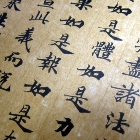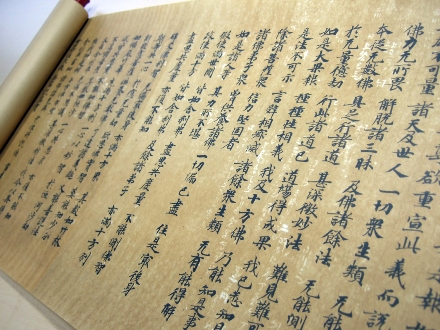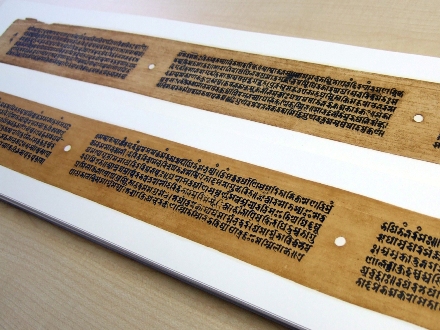Profile

- Research Subject
Old Japanese manuscripts of Chinese translations of Buddhist scriptures
History of Buddhist doctrines and their interpretations
- Research Fields
- Buddhism
- Faculty - Division / Research Group / Laboratory
- Division of Humanities / Research Group of Philosophy and Religious Studies / Laboratory of Religious Studies and Indian Philosophy
- Graduate School - Division / Department / Laboratory
- Division of Humanities / Department of Philosophy and Religious Studies / Laboratory of Religious Studies and Indian Philosophy
- School - Course / Laboratory
- Division of Humanities and Human Sciences / Course of Philosophy and Cultural Studies / Laboratory of Religious Studies and Indian Philosophy
- Related Links
Lab.letters


From cultural assets to “text”: A new movement in research on old Japanese manuscripts of Chinese translations from Buddhist scripture (“Nihon-koshakyō”日本古冩經 in Japanese)
Old Japanese Buddhist manuscripts have been highly valued as art or cultural assets, but a new movement has been recently added to that tradition. Some institutes in Japan have started to compile databases of old Buddhist manuscripts by converting them into digital images. Researchers in this discipline have started to examine the old Buddhist manuscripts for textual research. Fascinated with this new approach, I am also working on manuscript-based research of Buddhist texts, more specifically, comparing old Japanese Buddhist manuscripts with other versions such as the second Koryŏ woodblock-printed edition created in the 13th century, which was critically compiled as the main source text into the Taishō Shinshū Daizōkyō (the Taishō Canon).

The only university in Hokkaido where students can exclusively engage in Buddhist studies
In reading a text I try to pay as much close attention as possible to every word and phrase, including variant readings, and I do this not only when conducting my own research but also when tutoring my students. I would like my students to acquire multiple perspectives by this kind of training.
Hokkaido University is the only institution in the Hokkaido area where students can exclusively learn classical Indian languages such as Sanskrit and Pali, as well as engage in Buddhist studies. It would be tremendously gratifying if I could provide motivated students with support for their studies.
Message
The Buddha, who continued preaching for 45 years after his enlightenment, gave his final teaching of jitōmyō (light of self-lamp) and hōtōmyō (light of dharma lamp) by uttering these words: “Make yourself a light. Rely upon yourself. Make dharma your light. Rely upon it.” Buddhists who faithfully adhered to this continued in their pursuit of the dharma taught by Buddha over several generations.
While this may sound somewhat crude, it is no exaggeration to say that characteristic doctrines of various Buddhist schools, a number of Buddhist scriptures as well as numerous commentaries on them, and so forth were created as a result of individual Buddhists earnestly pondering what the dharma was.
Buddhism may be difficult to understand and grasp as a whole due to its long history, various doctrines and ideas, as well as regional characteristics. It can be safely said, however, that such diversity is what makes Buddhism interesting.



